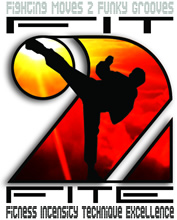Origins
Karate is an ancient form of hand to hand combat that has its roots firmly embedded in Okinawa and Japan. It is interesting to note that many of the old karate masters enjoyed great longevity, and lived into their late 80s and early 90s. This is not surprising when you analyse the rigorous training that forged strong hearts and iron-like bodies, in addition to producing calm and serene minds, that had to pass on volumes of information to future generations. Today, karate is practiced both for self-defense and as a sport, but there are clear distinctions between the two options, depending on the choice of the individual. However, regardless of your choice, the common denominator is the many physical benefits that the discipline of karate has to offer. Karate’s high repetition, low resistance movements, dynamic tension, and ballistic movements develop a longer, leaner and more flexible body. Muscles have more of their areas close to blood supply routes, thus producing maximum endurance and well-being.
Fundamentals of Fitness - Physical benefits
FIT2FITE is founded on Traditional Karate principals of training. As a consequence continuous attendance of FIT2FITE does not produce large knotty muscles,it tends to exchange flabby fat tissue for lean tissue by enhancing the Fundamentals of Fitness: Stamina, Strength, Suppleness and Speed while improving balance, coordination and fluidity of movement.

Claire Burton, World Natural Body Building Champion/F2F Instructor.
Leg muscles
FIT2FITE utilises a variety of low and long stances with particular emphasis on the horse stance. This stance is not dissimilar to a lunge position. The Fit2Fiter is made to stay in deep-rooted stances that strengthen leg muscles and provide a stable base from which they can deliver the full range of F2F techniques. The class will effectively be working on toning the hamstrings, quadriceps and gluteus maximus (backside) for a constant 45 minutes without compromise to the rest of the body.
Core muscles
The act of rotating and thrusting your hips during punching and kicking plus lifting your knee first before kicking requires activation of your core muscles to help stabilise multiple forces. As a result you develop a strong core.
Upper body muscle
Punches, strikes and blocks require the engagement of muscle groups including deltoids (shoulders), obliques (side muscles), pectorals (chest), triceps and latissimus dorsi (back). For example, the straight punch requires you to move your fist from the hip position towards the target. This act of moving your fist and twisting in a straight line, away from your body, requires contraction of your pectorals, biceps and triceps. The latissimus dorsi works to stop your shoulders from rising during the punch. This regular contraction/relaxation of all body muscles brings overall muscle tone to the body.
Aerobic and Anaerobic conditioning
Karate is extremely explosive. FIT2FITE combinations and techniques executed during the “fight phase” reflect this intensity. Consequently the muscles develop ballistically forming a natural shape and tone to facilitate the movements and delivery. Alongside the strategic bursts of kicks, punches and sweeps not forgetting the sharp directional changes, F2F sends participants into anaerobic mode. This means they are functioning at about 90 per cent of their maximum heart rate.
The typical training regimen, involving extensive, elongated movements of the entire body, raises the pulse rate forcing the heart and lungs to work nearer their capacity for a protracted period. This demand on the cardiovascular system develops aerobic fitness.
FIT2FITE’s repetition and technique focus builds aerobic conditioning, whereby your heart rate stays at approximately 130 beats per minute (bpm). This increased ventilation is termed an aerobic effect. FIT2FITE’s focus on the lower abdomen, hips and inner thighs assists with the restoration of muscle tone after pregnancy. These areas are stretched and weakened during pregnancy.
The entire muscle system of the body, from the fingers to the toes, is brought into play. The training tends to normalize body weight in that it results in a gain of solid tissue for the underweight and a loss of body fat for the overweight. The average calorie-consumption for a committed and focussed FIT2FITE workout is between Seven and Nine hundred calories per hour, one of the highest for any activity.
Extracts from Physical benefits from Karate | The Trinidad Guardian, David Chin Leung, 26 July 2011.
